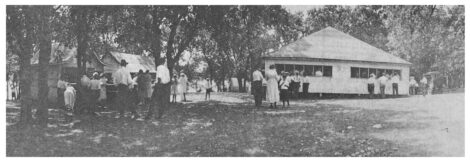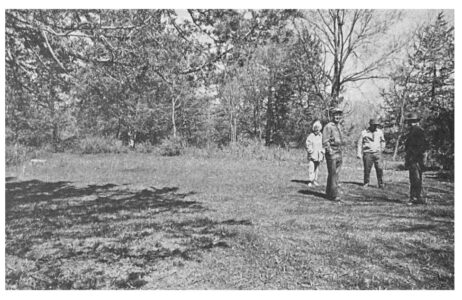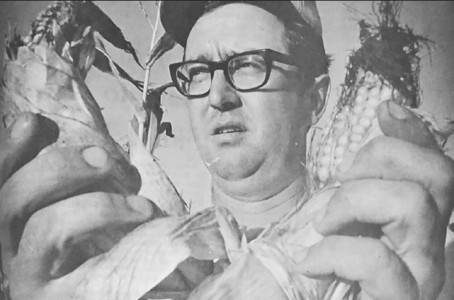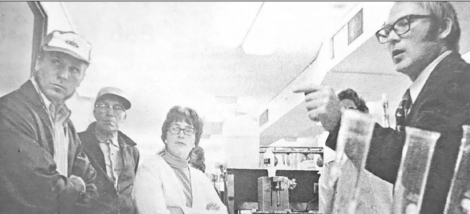Lake Hanska may make recreation comeback
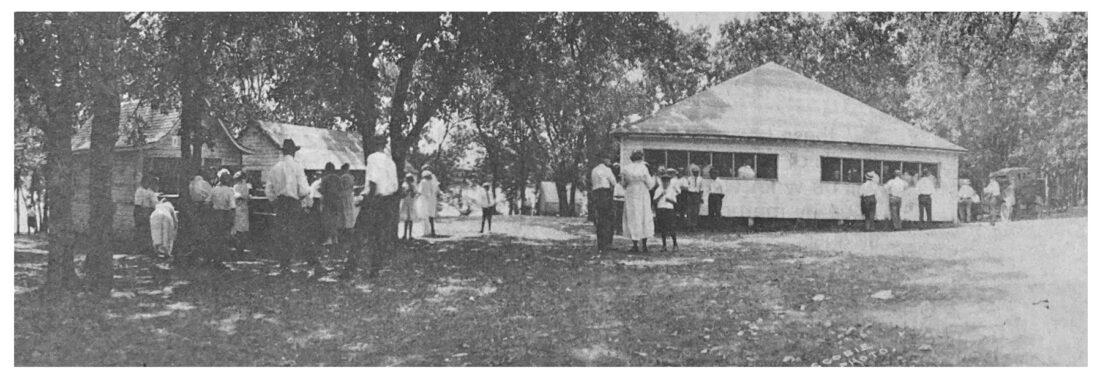
THE FORT HILL Amusement Park was an attraction for miles around early in the century when band concerts and gossip plus the cool lake breezes were all equally attractive. The pavilion at right and concession stand have long been gone and trees and plants now hide all traces of the buildings.
- THE FORT HILL Amusement Park was an attraction for miles around early in the century when band concerts and gossip plus the cool lake breezes were all equally attractive. The pavilion at right and concession stand have long been gone and trees and plants now hide all traces of the buildings.
- FORT HANSKA, now known as Fort Hill, once stood on this grassy knoll overlooking Lake Hanska. Mrs. O.M. Simundson, left, Ollie Synsteby, her brother, Fred Sather and Albert Bruss look the area over. Mrs. Simundson and her husband of Groton, S. D. are visiting her brother.
“I don’t think 500 Indians could whip us out of it now,” Milton Stubbs wrote his folks.
Stubbs was a member of Co. B Ninth Minnesota Volunteers and Fort Hanska was one of a series of forts built between New Ulm and the Iowa border after the 1862 Indian uprising.
Even though no serious Indian incursions were expected by military men, the forts were built along the frontier to prevent an exodus of fearful white inhabitants, according to material at the Brown County Historical Society.
Stubbs wrote a cheerful letter in June 1863, saying the fort was located on an old Indian Trail and soldiers could see from 12 to 15 miles in any direction. He praised the nearby swimming and fishing.
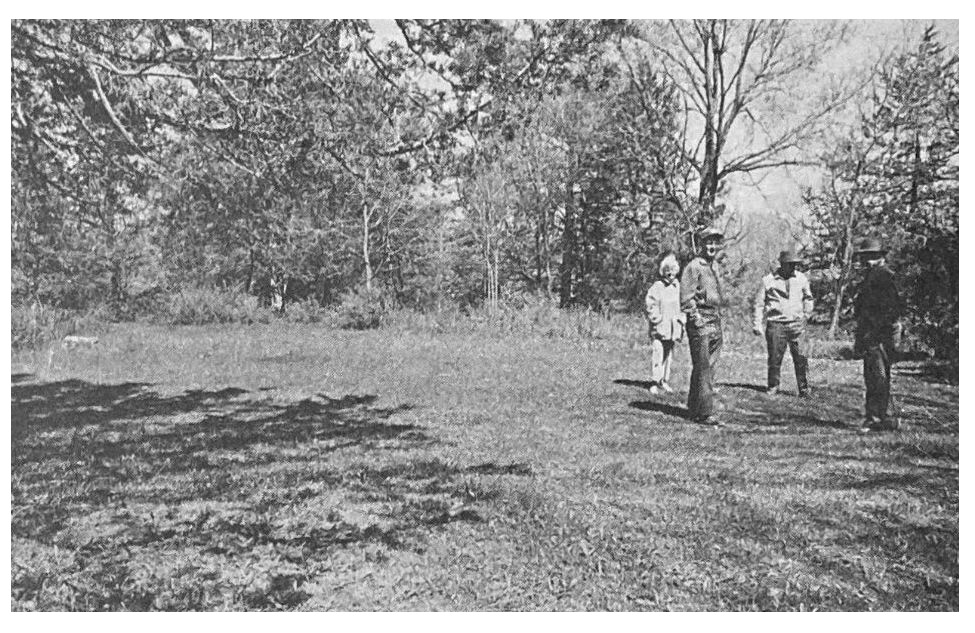
FORT HANSKA, now known as Fort Hill, once stood on this grassy knoll overlooking Lake Hanska. Mrs. O.M. Simundson, left, Ollie Synsteby, her brother, Fred Sather and Albert Bruss look the area over. Mrs. Simundson and her husband of Groton, S. D. are visiting her brother.
“We don’t hear anything of the Indians in this part of the county,” he wrote.”I have noticed that the people are not so afraid of the Indians away out here as they are near St. Peter.”
Two months later, however, Stubbs was writing morosely of bad food and a commander disliked by the men, directing his brother not to enlist even though the military seemed a glamorous way of life.
The soldiers only stayed a short time and today the only reminder of the fort is a cleared area at the top of a knoll close to Lake Hanska, low earthen embankments outlining a rectangular area thought to mark the walls. The treeless lakeshore has become covered with a variety of trees, thanks to the efforts of Ole Synsteby, who bought the land in 1879.
Synsteby in about 1900 opened the Fort Hanska Amusement Park below the fort site on the shore of Lake Hanska. A pavilion and concession stand were filled for the weekly band concerts of the Lake Hanska Shore Band.
But eventually the band members, all farmers in the area, either died or became busy with other activities or even had to quit because of problems with their false teeth when they tootled.
And the Synsteby family found maintenance of their private park too much work.
The pavilion came down in about 1927. A fountain by the lake which at one time sprayed water into the air, fed from a reservoir on the other side of the fort, fell into disrepair. As area towns built their own swimming pools fewer people came to the lake to cool off on a hot summer evening.
NOW PEOPLE still come for bullhead fishing and picnics, but they must crawl through a barbed wire fence and hike down to the lake to do it.
Ollie Synsteby, son of Ole, has not put up any “No trespassing” signs yet, even though the land is private property and visitors often abuse his good nature by leaving trash behind them.
The signs posted say “No littering” and advise visitors they must leave by 10 p.m. This is the main part of the land the county hopes to use for the first county park.
Also proposed for inclusion are a slough and some lakeshore on the Fred Sather farm, a hill owned by Synsteby containing two Indian mounds across the road from the lake, and lakeshore on the Albert Bruss farm which the county park commission would like to use for boat launchings.
The Indian mounds were discovered when a gravel pit was started and human bones were uncovered. Ole Synsteby replaced the bones and planted six cedars to mark the spot. The mounds have remained untouched by human hands, although the gophers do get into them each spring. A park at the Fort Hill site has been discussed in the past by the Lake Hanska Sportsman’s Club and the state, but the plans have never reached the point they have now under the proposal for an 82-acre county park.
The county has applied for state and federal funding help with the $86,000 land acquisition costs and officials hope to hear by June or July whether the application will be granted acquisition costs and officials hope to hear by June or July whether the application will be granted.

